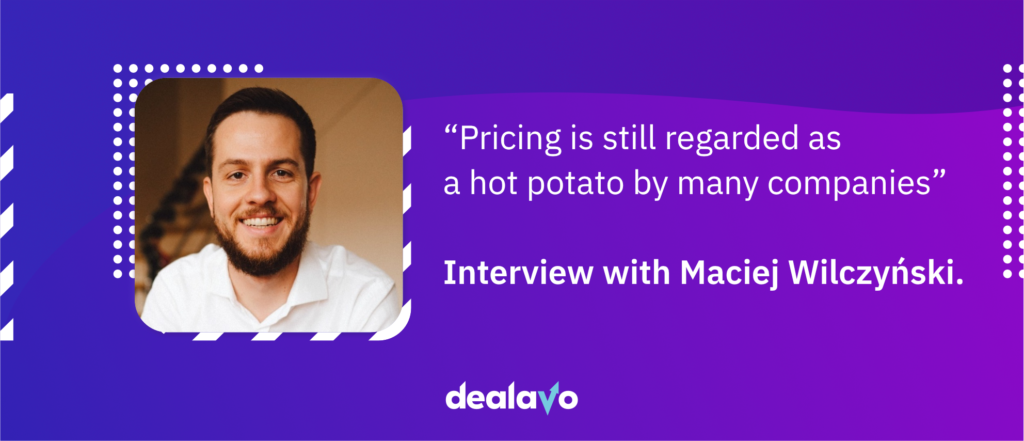“Pricing is still regarded as a hot potato by many companies” – interview with Maciej Wilczyński, CEO of Valueships.
- 11 January 2022

Which products in online shops should be discounted?
Why do 70% of shops participate in price wars?
Why do sellers rely on marketplaces so much?
How did Porsche use value-added pricing and how did Slack benefit from user-based pricing?
These questions will be answered by Maciej Wilczyński – the CEO of Valueships and lecturer at the Wrocław University of Economics.
Aleksandra Holownia, Dealavo: You have been dealing with pricing for years. Have you noticed any changes in the attitude of enterprises towards price management?
Maciej Wilczyński, Valueships: At many companies, pricing is still regarded as a hot potato. This is especially visible in the case of start-ups – everybody knows that it is an important matter, but it is often the most neglected element of the 4Ps, i.e. the marketing mix. This is all the more interesting as it is the only element that affects the revenue. The other elements of the 4Ps – distribution, product and promotion – generate costs.
Of course, the bigger the company, the quicker it starts to pay attention to the role of pricing. What distinguishes so-called “hidden champions” from other enterprises is precisely the ability to monetise their offering and generate high profits. The term was popularised by Hermann Simon, one of the greatest authorities in the area of pricing.
Enterprises should take advantage of situations where they offer a higher value than their competition and set accordingly higher prices. The word “price” comes from the Latin word “pretium”, which means price but also value. This means that when the value of the product is higher, the customers are more likely to pay a higher price. The famous quote of Warren Buffet partly explains this phenomenon: “The single most important decision in evaluating a business is pricing power. If you’ve got the power to raise prices without losing business to a competitor, you’ve got a very good business. And if you have to have a prayer session before raising the price by 10 percent, then you’ve got a terrible business”.
Currently, pricing tendencies largely depend on the industry. For instance, in the SaaS environment, the most popular trend at the moment is the transition from per-feature pricing to user-based pricing. A good example of this is Slack, where companies pay for every user of the application. This makes the model easily scalable – especially given the fact that Slack attracts new customers with the possibility of sending the first 10 thousand messages for free. During this period, the users get used to the application.
I believe that the way in which the enterprise manages its prices has a significant impact on its success.
You talked about pricing at SaaS companies, which can distinguish themselves with unique functions. What about price management at companies that sell products in e-commerce? Can online shops increase their prices without the fear that they will lose their customers?
If the company offers (…)
Maciej Wilczyński – Managing Partner of Valueships, a boutique consulting firm that provides pricing, monetization and commercial strategy for technology companies. In 2021, Valueships completed over 30 projects in Poland and abroad.
In addition, Maciej is the director and co-founder of Stanversity – a platform that educates managers in digital transformation, including Industry 4.0 and omnichannel. He gained consulting experience at McKinsey & Company, where he worked mainly on projects related to digital strategy, pricing and revenue growth management in the software, telco, banking, CPG and e-commerce sectors. Lecturer at the University of Economics in Wroclaw, where he is completing his PhD in strategic management.